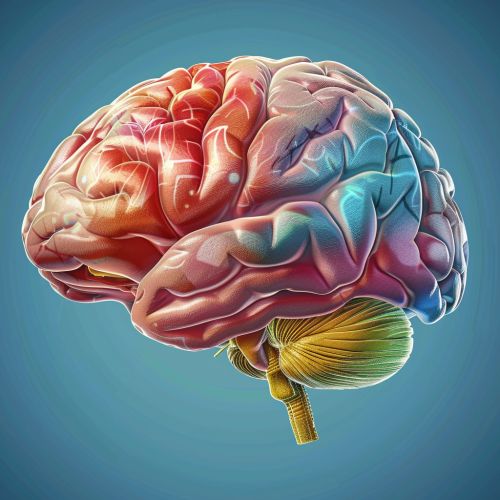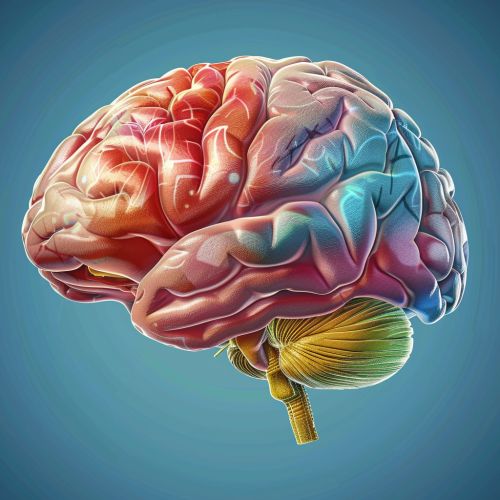Dual-Coding Theory: Difference between revisions
(Created page with "== Dual-Coding Theory == <div class='only_on_desktop image-preview'><div class='image-preview-loader'></div></div><div class='only_on_mobile image-preview'><div class='image-preview-loader'></div></div> Dual-Coding Theory (DCT) is a cognitive theory proposed by Allan Paivio in 1971. It posits that human cognition involves two distinct but interconnected systems for processing information: a verbal system and a non-verbal system. These systems work together to enhance l...") |
No edit summary |
||
| Line 1: | Line 1: | ||
== Dual-Coding Theory == | == Dual-Coding Theory == | ||
[[Image:Detail-97161.jpg|thumb|center|An illustration of a human brain with different sections highlighted.|class=only_on_mobile]] | |||
[[Image:Detail-97162.jpg|thumb|center|An illustration of a human brain with different sections highlighted.|class=only_on_desktop]] | |||
Dual-Coding Theory (DCT) is a cognitive theory proposed by Allan Paivio in 1971. It posits that human cognition involves two distinct but interconnected systems for processing information: a verbal system and a non-verbal system. These systems work together to enhance learning and memory by encoding information both linguistically and visually. | Dual-Coding Theory (DCT) is a cognitive theory proposed by Allan Paivio in 1971. It posits that human cognition involves two distinct but interconnected systems for processing information: a verbal system and a non-verbal system. These systems work together to enhance learning and memory by encoding information both linguistically and visually. | ||
Latest revision as of 00:35, 24 July 2024
Dual-Coding Theory


Dual-Coding Theory (DCT) is a cognitive theory proposed by Allan Paivio in 1971. It posits that human cognition involves two distinct but interconnected systems for processing information: a verbal system and a non-verbal system. These systems work together to enhance learning and memory by encoding information both linguistically and visually.
Historical Background
The origins of Dual-Coding Theory can be traced back to early cognitive psychology and the work of researchers such as Jean Piaget and Jerome Bruner. Allan Paivio's seminal work, "Imagery and Verbal Processes," laid the foundation for DCT by integrating these earlier theories with empirical research on mental imagery and verbal processing.
Theoretical Framework
Verbal System
The verbal system is responsible for processing linguistic information. This includes spoken and written language, as well as symbolic representations such as numbers and mathematical symbols. The verbal system operates through a network of interconnected nodes that represent words, phrases, and sentences. These nodes are activated when we read, write, speak, or listen to language.
Non-Verbal System
The non-verbal system, on the other hand, processes visual and spatial information. This includes images, diagrams, and other forms of visual representation. The non-verbal system is also organized into a network of nodes, but these nodes represent visual and spatial features rather than linguistic elements. This system is crucial for tasks that involve mental imagery, spatial reasoning, and visual memory.
Interaction Between Systems
One of the key tenets of Dual-Coding Theory is that the verbal and non-verbal systems are interconnected and can influence each other. For example, when we read a text, we often form mental images of the content, which helps us understand and remember the information better. Conversely, when we look at a picture, we may generate verbal descriptions or labels that aid in comprehension and recall.
Referential Connections
Referential connections are the links between the verbal and non-verbal systems. These connections allow information to be encoded in both formats, enhancing memory and learning. For instance, a word can trigger a mental image, and a picture can evoke verbal labels. These bidirectional connections are essential for effective information processing.
Empirical Evidence
Numerous studies have provided empirical support for Dual-Coding Theory. Research has shown that people remember information better when it is presented in both verbal and visual formats compared to either format alone. This phenomenon, known as the "picture superiority effect," underscores the importance of dual coding in enhancing memory.
Experimental Studies
Experimental studies have demonstrated that dual-coded information is more easily recalled and recognized. For example, participants in memory experiments are often better at remembering lists of words when they are accompanied by corresponding images. These findings suggest that the dual coding of information creates multiple retrieval pathways, making it easier to access stored information.
Applications
Education
Dual-Coding Theory has significant implications for education. Educators can enhance learning by incorporating both verbal and visual elements into their teaching materials. For example, textbooks that include diagrams, illustrations, and charts alongside textual explanations are more effective than text-only resources. Multimedia presentations that combine spoken words with images and animations can also improve comprehension and retention.
Cognitive Therapy
In cognitive therapy, Dual-Coding Theory can be applied to help patients process and reframe negative thoughts. Therapists may use visual aids, such as drawings or diagrams, to complement verbal discussions. This dual approach can make abstract concepts more concrete and easier to understand.
User Interface Design
In the field of user interface design, Dual-Coding Theory informs the creation of more intuitive and user-friendly interfaces. Designers can enhance usability by integrating text with icons, images, and other visual elements. This approach helps users process information more efficiently and reduces cognitive load.
Criticisms and Limitations
Despite its widespread acceptance, Dual-Coding Theory has faced criticisms and limitations. Some researchers argue that the theory oversimplifies the complexity of human cognition by dividing it into just two systems. Others contend that it does not adequately account for the role of other sensory modalities, such as auditory or tactile information.
Alternative Theories
Alternative theories, such as the Multimedia Learning Theory proposed by Richard Mayer, offer different perspectives on how people process information. Mayer's theory emphasizes the importance of integrating multiple sensory modalities, including auditory and kinesthetic information, in addition to visual and verbal elements.
Future Directions
Research on Dual-Coding Theory continues to evolve, with new studies exploring its applications in various domains. Advances in neuroimaging techniques, such as functional magnetic resonance imaging (fMRI), are providing deeper insights into the neural mechanisms underlying dual coding. Future research may also investigate the role of other sensory modalities and how they interact with verbal and non-verbal systems.
